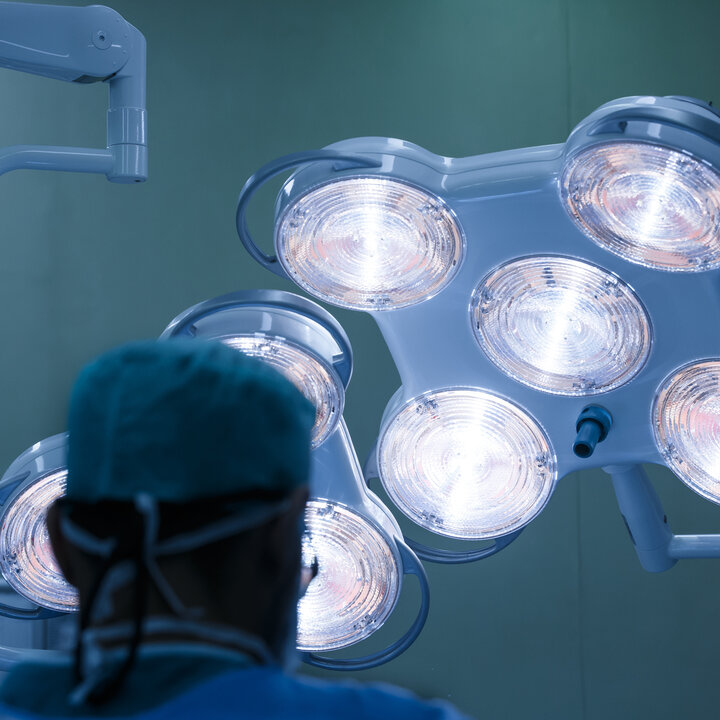Modern LED luminaires for open wound surgery mix the light of multiple coloured LEDs to produce a homogeneous, high-intensity white light. The spectral composition of the light and the spatial distribution of the LEDs affect the colour appearance of illuminated tissues. The question is which spectral composition and spatial configuration is best for improving the visibility of diseased tissues. This so-called texture visibility involves a perceptual judgement. However, perceptually, a given texture holds information about material properties (roughness and shininess) and properties of the illuminant (direction of incidence, diffuseness).
In this project we investigated the relation between perceptual judgements of texture visibility to diffuseness and illumination direction, and to surface roughness and shininess. The results depend strongly on the material: texture visibility increases with diffuseness for a sponge and decreases with diffuseness for scarf. For plaster we independently varied roughness and shininess. We found that texture visibility decreases with diffuseness when the surface is matte, but this effect disappears when the surface is specular. Contrary to expectation, surface roughness is a poor predictor of texture visibility. These results show that perceived texture visibility is a complex interplay of object properties and the illuminant.
Project Related Publications
-
H. Wang,R. H. Cuijpers,I. M.L.C. Vogels,M. Ronnier Luo,I. Heynderickx,Z. Zheng
Optimising the illumination spectrum for tissue texture visibility
Lighting Research and Technology (2018) -
R.H. Cuijpers,H. Wang
The effect of diffuseness and direction of light on perceived texture visibility
(2018) -
Huihui Wang,R.H. Cuijpers,M.R. Luo,I.E.J. Heynderickx,Zh. Zheng
Optimal illumination for local contrast enhancement based on the human visual system
Journal of Biomedical Optics (2015)
Researchers involved in this project
Project Related Publications
-
H. Wang,R. H. Cuijpers,I. M.L.C. Vogels,M. Ronnier Luo,I. Heynderickx,Z. Zheng
Optimising the illumination spectrum for tissue texture visibility
Lighting Research and Technology (2018) -
R.H. Cuijpers,H. Wang
The effect of diffuseness and direction of light on perceived texture visibility
(2018) -
Huihui Wang,R.H. Cuijpers,M.R. Luo,I.E.J. Heynderickx,Zh. Zheng
Optimal illumination for local contrast enhancement based on the human visual system
Journal of Biomedical Optics (2015)
